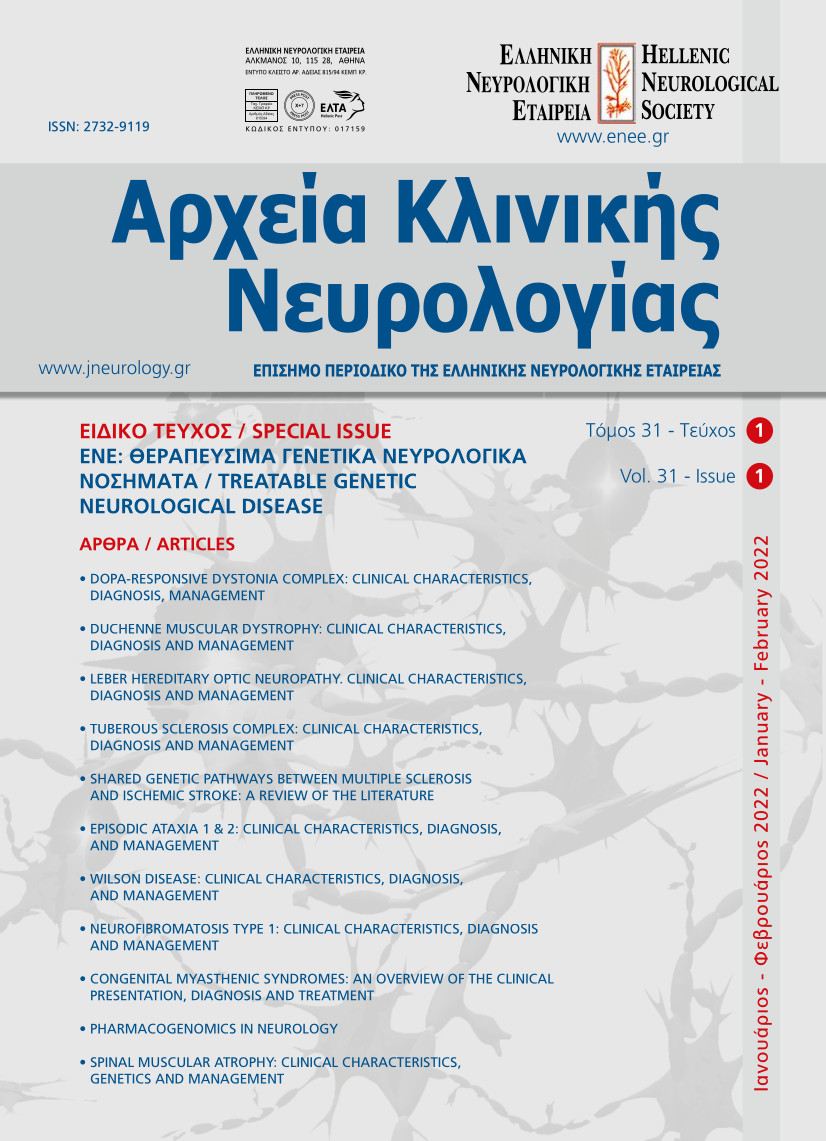EPISODIC ATAXIA 1 & 2: CLINICAL CHARACTERISTICS, DIAGNOSIS, AND MANAGEMENT
Λέξεις-κλειδιά:
episodic ataxia type 1, episodic ataxia type 2, genetic channelopathies, CACNA1A, KCNA1Περίληψη
Episodic Ataxias (EAs) are autosomal-dominant inherited ion channelopathies presenting as brief paroxysmal
attacks of ataxia with a wide spectrum of associated ictal and interictal neurological symptoms.
Episodic Ataxia type 1, (EA1) and Episodic Ataxia type 2(EA2) are the most common forms of EAs, caused
by mutations of genes altering the function of the potassium (KCNA1) and calcium (CACNA1A) channels
respectively. EA1 is associated with interictal myokymia while EA2 with interictal persistent nystagmus.
Moreover, patients with EA2 may present with progressive ataxia and atrophy of the cerebellar vermis.
Pharmacological treatments are available for the management of EA1 and EA2.Treatment of choice for
EA1 is carbamazepine whereas acetazolamide has a variable effect. In patients with EA2, acetazolamide
and 4-aminopyridine seem to be helpful in decreasing the frequency of attacks. Given the genetic and
phenotypic heterogeneity of episodic ataxias, next generation sequencing (NGS) could be a diagnostic tool
leading to specific and more efficacious therapies.


